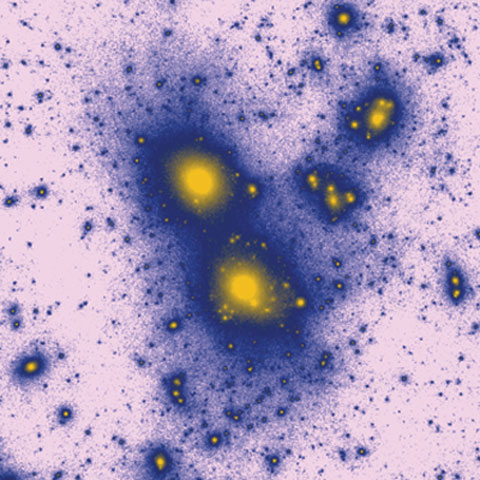Dark Matter Simulation

A computer simulation mapping the distribution of dark matter in a volume of space.
Image Credit: Mikhail V. Medvedev/PRL/APS
September 16, 2014
Although dark matter makes up about 25 percent of the universe, physicists are still struggling to determine just what it is. Physicists have put forth a number of dark matter candidates ranging from WIMPS (Weakly Interacting Massive Particles) to MACHOs (Massive Compact Halo Objects).
And one of the simplest and most successful cosmological theories incorporating dark matter is called the Lamda Cold Dark Matter model. Although the model agrees with much of the observational evidence astrophysicists have, it has still been plagued by a few lingering discrepancies.
For instance, the Lamda CDM model tends to work well on the massive scales found in much of the universe, but it tends to fall apart on smaller scales. To help resolve some of these issues, physicist Mikhail Medvedev recently ran intensive computer simulations using a different dark matter candidate.
In his model, Medvedev used hypothetical quantum flavor-mixed particles as his candidates and successfully aligned the model with some of the observational data that the traditional Lambda CDM model had failed to resolve.
The term "flavor" refers to the way that various subatomic particles distinguish themselves from one another. But flavor-mixed particles are special.
As Medvedev told the University of Kansas press office, "A flavor-mixed particle is weird — it has several masses simultaneously — and this leads to fascinating and unusual effects."
You can learn more about Medvedev's model in his Physical Review Letters paper.














